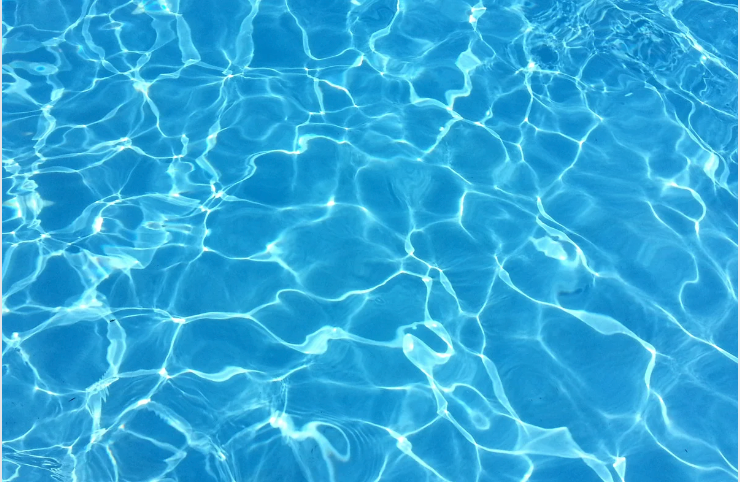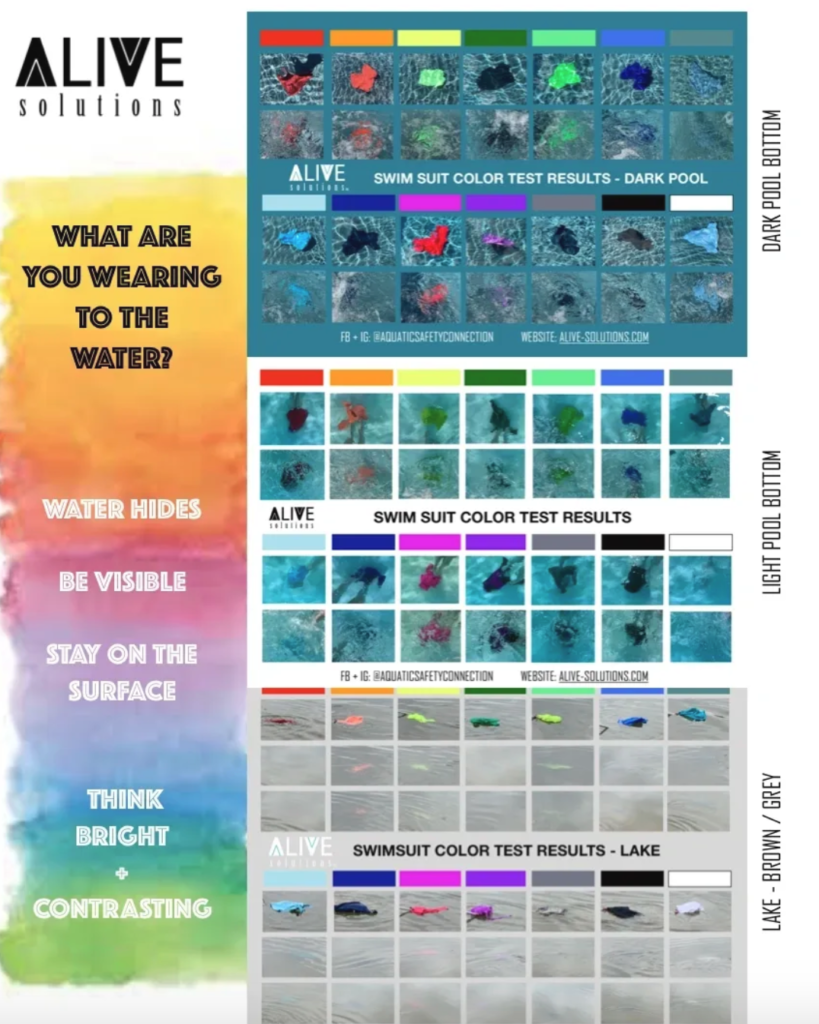May is Water Safety Awareness month- super fitting, since summer is around the corner and we will soon be spending lots of time at pools, splashpads, and beaches (yay!).
As someone spent high school and college lifeguarding and teaching swim lessons, I know how quickly a fun day at the pool can turn into an emergency. Now that I’m a parent, here are 5 things that I’m doing to keep my kids safe around the water:

Appoint a Trusted Water Watcher:
You are the most important person for keeping your children safe around the water. It’s important to think about how deep the water is (for example, a kiddie pool in the backyard is a little different than open Ocean) the swimming skills of your children, the ages of everyone involved, whether the pool is guarded, etc.
One of my favorite resources for this is Alive Solutions Blog. (You might recognize the name from the viral FB post about swimsuit color- more on that later ? ) They do a great job outlining the ANCHOR method for choosing a safe person to watch your children by the water:
- A – Ability to Reach Deepest End, Lift Someone Out, Provide Drowning Care – in short, all the skills you need to rescue someone.
- N- No distractions- You need to be able to stay focused
- C- Confident Swim Skills- They need to have the swim skills to take care of the people they are watching.
- H- Handy Flotation– rescue tube, flotation ring, shepherd’s crook, life jacket- have a tool ready to go
- O- Optics – Good vision + Health
- R- Really Trusted, Educated, and Aware– Who you trust to watch your kids normally and who you trust to watch them around the water are two totally different things. This is one area where you want to be extremely restrictive.

Have a Handoff Procedure Between Water Watchers:
I always make sure I discuss this with other adults in advance so we know who is in charge. For a handoff, we confirm the adult watching, the children watching, and that the person has the whistle. Whoever is holding that whistle is responsible for keeping the stated children safe.
Is it a little silly? Yes. Is the only person who ever blows the whistle my three year old? Also Yes.
But your object can be anything. My husband and I are super easily distracted – actually holding something helps both of us remember that we need to focus, even if it’s just a backyard kiddie pool.
Here is what we thought handover would look like when we started this:
Adult 1: Are you able to take over water watching?
Adult 2: I am prepared to take over water watching.
Adult 1: Do you have eyes on Meg, Beth, Joe, and Amy?
Adult 2: I have eyes on Meg, Beth, Joe, and Amy.
Adult 1: I am passing you the whistle and completing handover.
Adult 2: I have the whistle and handover is complete.
But that was awkward, so now it goes:
Adult 1: Are you ok to watch Meg, Beth, Joe, and Amy? (hands whistle over).
Adult 2: Yes. I have the whistle and I have eyes on Meg, Beth, Joe, and Amy.
Adult 1: Great. I’m going to grab a snack- you all set?
Adult 2: Sure- bring some back. I’ve got the kids.
The important thing is that you physically took control and listed the names of the children you are now responsible for. This way everyone is on the same page and no child gets left out.
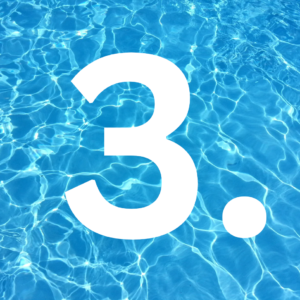 Be prepared with the right stuff:
Be prepared with the right stuff:
ALWAYS have a way of calling 911- and USE IT:
Your cell phone wants to be easily accessible. Water emergencies happen in the blink of an eye and 911 is your copilot in these emergencies. If you’re not sure if you should call, just call. If nothing else, you now have access to tons of resources and they’ll talk you through how to handle the emergency.
Life vests save lives:
I have a runner of a toddler. Even when I am watching her closely, she still somehow ends up across the room and also on top of a wall (how!?!?!) This means that if we are by any sort of water, she is wearing her life jacket. Just because she has her life vest on does not mean I get to relax, but it does buy me a few seconds to get to her if she’s jumped into the water by herself.
Choose Swimsuit color carefully:
I always try to get the brightest, most orangy red/pink swimsuits for my kids. These colors are the most visible. The chart below does a great job of illustrating which suit colors are most visible:
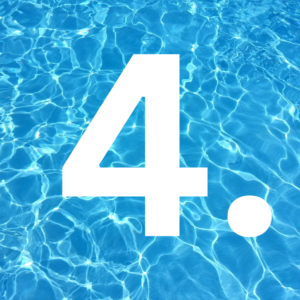
Enroll your child in swim lessons:
Did you know that there are tons of programs offering free and reduced cost swim lessons?
CT DEEP just announced a Free Swimming Lesson Program in Partnership with Connecticut YMCAs , and Stewie the Duck now has a swim school in Norwalk.
We’re working on compiling a list of Swim Lessons for Kids in Connecticut. We’ll link it here as soon as it’s done.
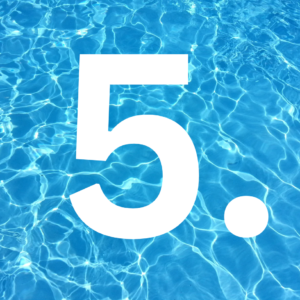 Know what to do in a water safety emergency (and review it with your kids) :
Know what to do in a water safety emergency (and review it with your kids) :
For kids:
It’s so important to teach young kids to tell a grown up if someone is struggling in the water. I cannot tell you the number of times in swim lessons where a kid slipped under the water and the whole group just sat there and watched without saying a word. Practice with them how they are going to respond.
With older kids, review how to call 911, who to talk to, as well as basic rescue skills.
The most important rescue skill for kids is “Reach or Throw- DON’T GO!” A person who is drowning is desperate for air. They are going to grab onto whatever they can- this includes the person trying to rescue them. I’ve been pushed under even WITH rescue equipment. I’ve been punched in the face. Unless they are trained lifeguards with rescue equipment, kids should not be performing a rescue.
For adults:
Know the Stages of Drowning and What to Look for:
We were taught in our lifeguarding class that when someone gets into trouble in the water, you have about 30 seconds to respond (and it’s closer to 20 when it’s a young child). The scariest thing about true drowning is that it is silent and it happens so quickly. Youtube has some examples of drowning here.
Young children are very tricky because they might appear to be doggy paddling- but their mouths are below the surface of the water and they cannot breathe. They might also appear to be playing or floating. This is why it’s so important to stay within arms reach of children who cannot swim well.
Responding to a drowning:
Alert the lifeguard if one is available:
They have the training to respond. If not:
Make sure the scene is safe and call 911:
It’s super hard but take a minute to make sure that it is safe for you to get your child- you cannot help if you also end up a victim. This is especially true if you have a larger child or teen. Remember: If you are trying to rescue someone who is drowning, their only thought is that they need air. This means that they are going to grab whatever they can to stay afloat. It’s common for drowning victims to wrap their arms around your neck/ This is super super dangerous if you don’t have the right training or rescue equipment.
Have 911 on standby while you’re doing all this. They can coach you through what to do.
Get the person out of the water and treat them accordingly:
Remove the person from the water and begin resuscitation. If you are resuscitating someone, you should have 911 responding on the way. They will coach you through rescue breathing. 911 is an amazing copilot.
Afterwards:
Any child who comes out of the water with symptoms of near drowning needs to be evaluated by a doctor. Keep a close eye on them. If your child shows any symptoms of near drowning, go straight to the hospital. If you are unsure, call your pediatrician.
What are your water safety tips? We want to know! Leave a comment below or email Kate@kidtivity.com
As always, lots of effort went into checking details for this post. Definitely do your own research and consult your local officials before taking any advice on the internet as gospel truth though! These are things we are doing, but they are not the only right things. As always, we can’t be held liable for how the advice performs in different contexts. Always use caution by the water.

